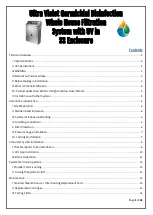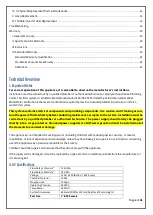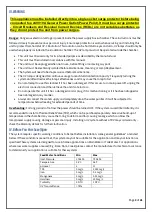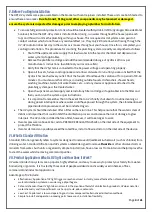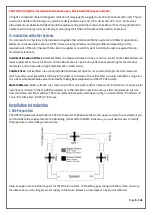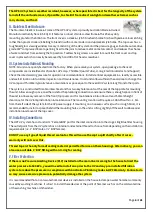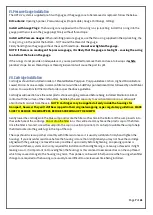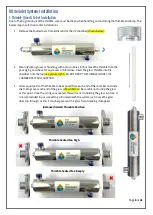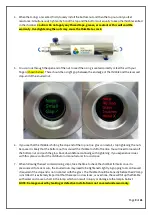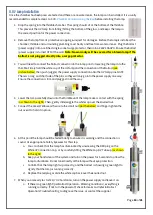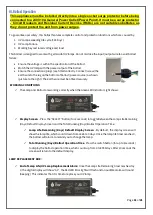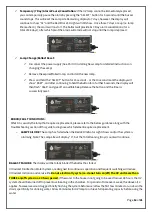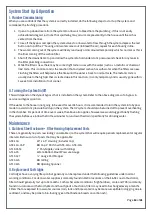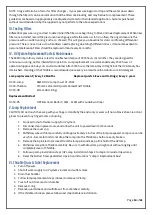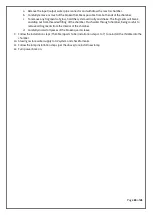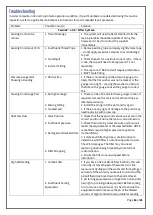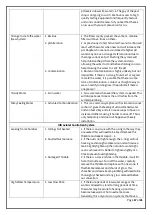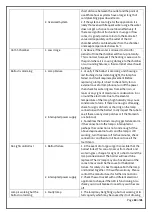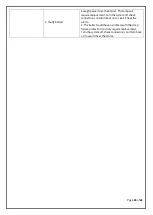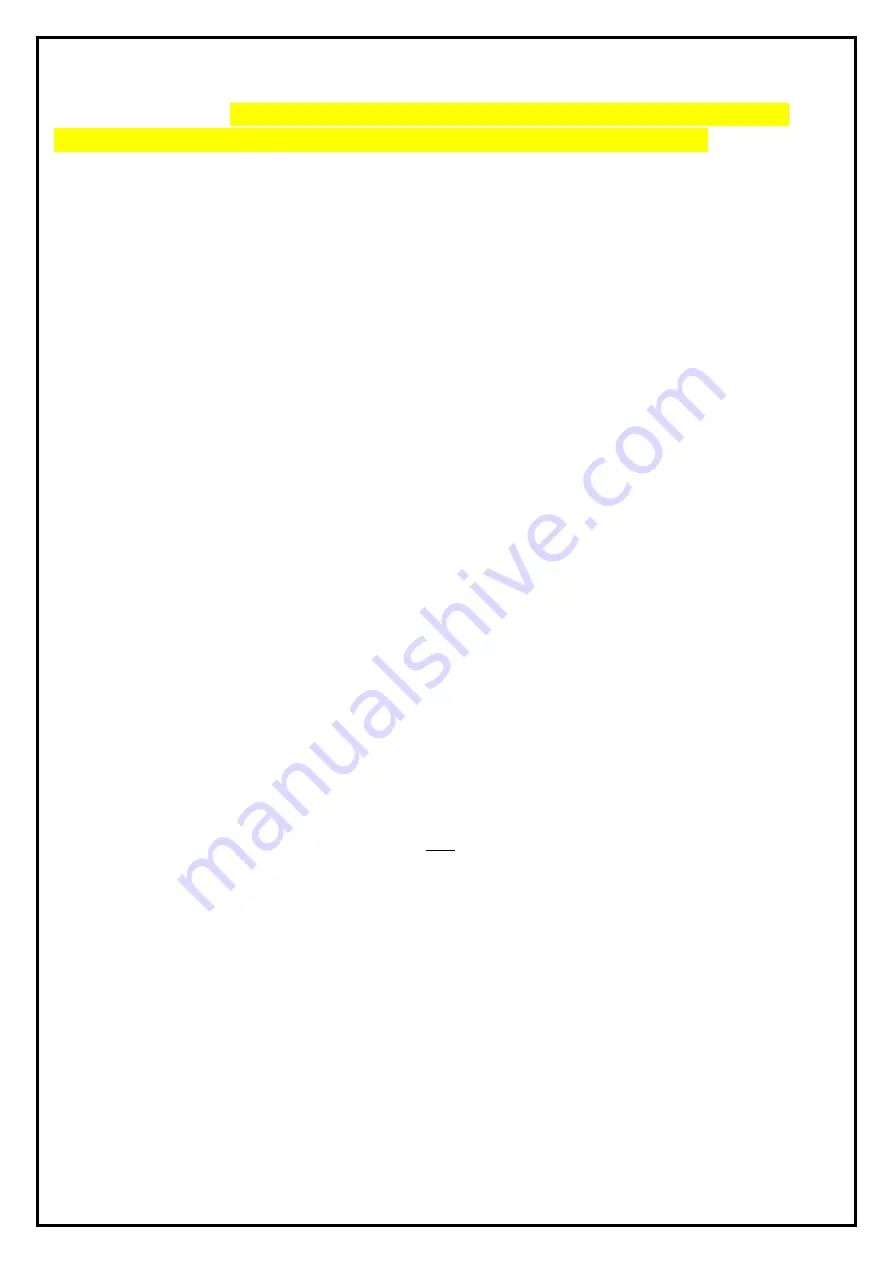
Page
4 of 21
V. Before You Begin Installation
The HPF-UV systems come pre-assembled on the bracket with centre joiners installed. These units are batch tested to
ensure there are no leaks.
Due to transit, fittings and other components may be loosened or damaged –
ensure the system is inspected for damages prior to employing a plumber for installation.
•
To ensure full germicidal protection, tanks should be treated with HydroSil-ULTRA (Hydrogen Peroxide Water
Sanitiser) before the HPF-UV system is installed. After dosing, run water throughout the house (open each
tap) and this will sanitise the plumbing within your house. This is required as UV systems are a point of
contact sanitiser which do not have any residual effect (i.e., they only kill bacteria when flowing through the
UV; UV radiation does not stay in the water as is moves throughout your house). Once this is completed, you
can begin installation. The procedure for sanitising the plumbing system is readily accomplished as follows:
1.
Shut off the upstream water supply that feeds water into the reactor chamber and depressurise
water system (if applicable).
2.
Remove the pre-filter cartridge and add the recommended dosage of Hydrosil Ultra as per
manufacturer’s instructions. (Available at your local re sellers)
3.
Verify that the UV System is connected to the AC power voltage and operating properly.
4.
Open all faucets, fixtures and appliances and allow cold water to run until you are satisfied that the
Hydrosil has reached every outlet. Shut the faucets off and leave the solution sit for a period of 30-60
minutes. You must ensure that all taps, including outside faucets, dishwashers, shower heads,
washing machines, toilets, hot water heater, etc., and any device or appliance attached to the
plumbing system pass the treated water.
5.
Open the upstream water supply and reinstall any filter cartridges (if applicable) into the filter and
then you can run the system as per instructions.
6.
It is important to remember that in the event that a UV is briefly shut down for routine cleaning or
during power interruptions where water could have passed through the system, the aforementioned
pipe disinfection procedure must be conducted again.
•
The UV system should be installed after a filter on the return line. This helps ensure that the water is clear of
debris and impurities that could inhibit the disinfection process and increase the risk of damage to glass
internals. The UV can be installed before a filter, however, it will take longer to work.
•
If water pressure is above 12bar, add a PRESSURE REGULATING VALVE on the inlet side of the equipment to
protect the Thimble.
•
If water demand can possibly exceed the rated flow, install a flow restrictor on the inlet side of the device.
VI. What is Standard Filtration
Standard Filtration generally refers to systems designed to remove dirt/sediment & chemicals (such as chlorine) from
drinking water. Standard Filtration and UV systems are NOT designed to remove
Fluoride or other dissolved salts or
minerals from water. Such units are generally simple to install/run, have a low cost to maintain and help improve the
taste of the water whilst removing common impurities.
VII. Product Application: What is UV light and How Does It Work?
UV water disinfection systems are a popular, highly effective, and easy to use way to protect your family from water-
borne living organisms. It is trusted by thousands of people worldwide and is widely used in homes, offices,
commercial and industrial applications.
Advantages of UV include:
•
Effectiveness: Application of UV light triggers a reaction almost instantly; more effective than chlorination and other
water disinfection systems on a wide range of pathogens.
•
Safe and chemical-free: UV light does not result in the creation of harmful disinfection by-products; UV does not alter
water chemistry and its constituents, such as pH, taste, odour, colour etc.
•
Low Cost: Capital cost is low and operating cost is low compared to alternative disinfection methods.
•
Simple to install and operate: no moving parts to wear out; installation flexibility.

